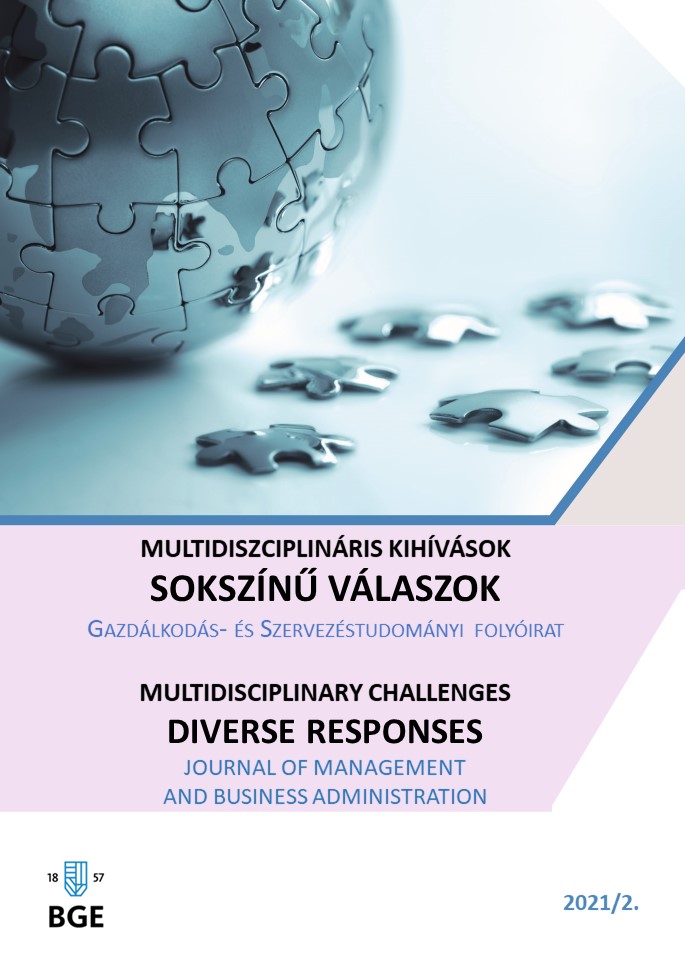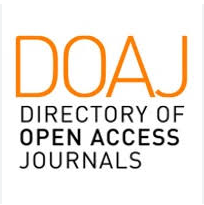Qualification of the results of aggregated lean KPIs along fuzzy logic
Abstract
The application of lean management has become a fundamental competitive criterion in the operation of industrial enterprises in the 21st century. The use of tools and methods related to different lean management appears in a significant part of corporate functions. However, it is also important to mention that these lean tools and methods are used in addition to the mixed use of many other tools and methods that support non-lean goals. This problem is also a challenge for controlling. Because lean accounting methods do not necessarily measure the extent of lean effectively in such an environment, a number of other methods are used to monitor lean in both academic and business practice. Of these, lean evaluation models based on fuzzy logic should be highlighted. With the help of these models, it is possible to determine the lean performance of a company primarily along financial data. The disadvantage of the model, however, is that lean management also appears in a number of functional areas that cannot be assessed along financial ratios, but they clearly influence the operation of lean management.
In our research, we illustrated a complex set of lean controlling methods through an instrumental case study, which allows companies to evaluate the performance of lean management and to explore different points of intervention. Our research results make it possible to calculate the lean fuzzy index not only along financial data, and thus clarify the information content of the index. Along the methods and indicators formulated in our research, the effectiveness of lean methods and tools, as well as the processes and methods supporting lean goals, can be separated and measured. Our research goal is to create a generally applicable lean controlling conceptual model.
References
Anthony, R. N. & Vijay, G. 2006. Management Control Systems 12th Edition. New York, McGraw-Hill Education.
Babbie, E. 2013. The practice of social research (13th. edit.). USA Belmont: Wadsworth, Cengange Learning.
Barta, Á. & Molnár, M. 2021. Forecasting oil price based on online occurence. Modern Science, 1, 5-11.
Bayou, M. E. & Korvin, A. D. E. 2008. Measuring the leanness of manufacturing systems—A case study of Ford Motor Company and General Motors. Journal of Engineering and Technology Management, 25(4), 287-304. https://doi.org/10.1016/j.jengtecman.2008.10.003
Bromwich, M. 1990. The case for strategic management accounting: The role of accounting information for strategy in competitive markets. Accounting, Organizations and Society, 15(1–2), 27-46. https://doi.org/10.1016/0361-3682(90)90011-I
Chiarini, A. 2013. Lean Organization: from the Tools of the Toyota Production System to Lean Office, Verlag Italy, Springer.
Duru, O., Bulut, E., Huang, S. & Yoshida, S. 2013. Shipping Performance Assessment and the Role of Key Performance Indicators (KPIs): 'Quality Function Deployment' for Transforming Shipowner's Expectation. SSRN Electronic Journal, 1-18. http://dx.doi.org/10.2139/ssrn.2195984
Fanning, K. 2016. Big Data and KPIs: A Valuable Connection 2016. Corporate Accounting and Finance, 27(3), 17-19. https://doi.org/10.1002/jcaf.22137
Grant, N. 2000. E-Business and Erp: Transforming the Enterprise. New York: John Wiley & Sons.
Gyenge, B. Kozma, T. & Szilágyi, H. 2015. Lean menedzsment alkalmazása szolgáltatóvállalat esetében. Vezetéstudomány, 46(4), 44-54.
Havasi, I. & Benő, D. 2012. Hagyományos és Fuzzy nem Felügyelt osztályozás összehasonlítása vegetációs index példáján. Tájökológiai Lapok, 10(1), 115–123.
Hawking, P. & Sellitto, C. 2010. Business Intelligence (BI) Critical Success Factors. 21st Australasian Conference on Information Systems, Brisbane
Hazen, B. T., Boone, C. A., Ezel, J. D. & Jones, F. L. A. 2014. Data quality for data science, predictive analytics, and big data in supply chain management: An introduction to the problem and suggestions for research and applications. International Journal of Production Economics, 154, 72-80. https://doi.org/10.1016/j.ijpe.2014.04.018
Hines, P., Holweg, M. & Rich, N. 2004. Learning to evolve – A review of contemporary lean thinking. International Journal of Operations & Production Management, 24(10), 994-1011. https://doi.org/10.1108/01443570410558049
Jacobs, F. R., Weston, F. C. 2006. Enterprise resource planning (ERP)—A brief history. Journal of Operations Management, 25(2), 357-363. https://doi.org/10.1016/j.jom.2006.11.005
Liker, J. K. 2004. The Toyota Way, New York. CWL Publishing Enterprises Inc.
Marodina, G. A., Guilherme, G. F., Tortorellac, L. & Torbjørn N. 2018. Lean product development and lean manufacturing: Testing moderation effects. International Journal of Production Economics. 203, 301-310. https://doi.org/10.1016/j.ijpe.2018.07.009
Maskell, B. H. 2000. Lean accounting for lean manufacturers. Manufacturing Engineering, 125(6), 46-53.
Negash, S. & Gray, P. 2008. Business Intelligence. In: F. Burstein, edit. Handbook on Decision Support Systems, 20(2), 150-152. Springer. Berlin, Heidelberg. https://doi.org/10.1007/978-3-540-48716-6_9
Otley, D. 1999. Performance management: a framework for management control systems research. Management Accounting Research, 10(4), 363-382. https://doi.org/10.1006/mare.1999.0115
Radó, I. 2019. Áttérés a pénzügyi számvitellel integrált vezetői számvitelre az SAP S/4HANA Finance szoftverrel, Menedzsment és controlling portál, https://www.controllingportal.hu/atteres-a-penzugyi-szamvitellel-integralt-vezetoi-szamvitelre-az-sap-s-4hana-finance-szoftverrel/
Richards, G., Yeoh, W., Chong, A. Y. L., & Popovič, A. 2017. Business Intelligence Effectiveness and Corporate Performance Management: An Empirical Analysis. Journal of Computer Information Systems, 1–9. https://doi.org/10.1080/08874417.2017.1334244
Ruiz‐de‐Arbulo‐Lopez, P., Fortuny‐Santos, J. & Cuatrecasas‐Arbós, L. 2013. Lean manufacturing: costing the value stream. Industrial Management & Data Systems, 113(5), 647-668. https://doi.org/10.1108/02635571311324124
Schnellbach, P. & Reinhart, G., 2015. Evaluating the Effects of Energy Productivity Measures on Lean Production Key Performance Indicators. Procedia CIRP, 26, 492-497. https://doi.org/10.1016/j.procir.2014.07.094
Shiego, S. 1989. A study of the Toyota Prduction System: From an Indistrial Engineering Viewpont. Productivity Press, Cambridge.
Singh, B., Garg, S. K. & Sharma, K. 2011. Value stream mapping: literature review and implications for Indian industry. The International Journal of Advanced Manufacturing Technology, 53, 799-809. 10.1007/s00170-010-2860-7
Stake, R. E. 1994. Case Studies. in: Denzin, N.K. és Lincoln, Y.S.: Handbook of qualitative research. Sage, California, Thousand Oaks
Tabesh, P., Moushavidim, E. & Hasani, S. 2019. Implementing big data strategies: A managerial perspective. Business Horizons, 3(62), 347-358. https://doi.org/10.1016/j.bushor.2019.02.001
Thalmeiner, G., Suhajda, Á. & Tóth, M. 2019. Teoretikus kontrolling szemléletek. Controller Info, 2, 23-29.
Thalmeiner, G. (2021). Target costing as an applied method in agribusiness. Modern science / Moderni veda, 2, 25-41.
Toarniczky, A., Imre, N., Jenei, I., Losonci, D. & Primecz, H. 2012. A lean kultúra értelmezése és mérése egy egészségügyi szolgáltatónál. Vezetéstudomány, 42 (2), 106-120. https://doi.org/10.14267/VEZTUD.2012.ksz2.11
Vörös, J. 2010. Termelés és szolgáltatásmenedzsment, Budapest, Akadémiai Kiadó.
Ward, Y., Crute, V., Tomkins, C. & Graves, A. 2003. Cost Management and Accounting Methods to Support Lean Aerospace Enterprises, University of Bath
Womack, J. P. & Jones, D. T. 2003. Lean Thinking. New York. A Division of Simon &Schuster.
Zadeh, L. A. 1965. Fuzzy sets. Information and Control, 8(3), 338–353. https://doi.org/10.1142/9789814261302_0021
Zéman, Z. 2020. Blockchain’s expected impact on accounting. Economics & working capital, SI, 91-96.


























